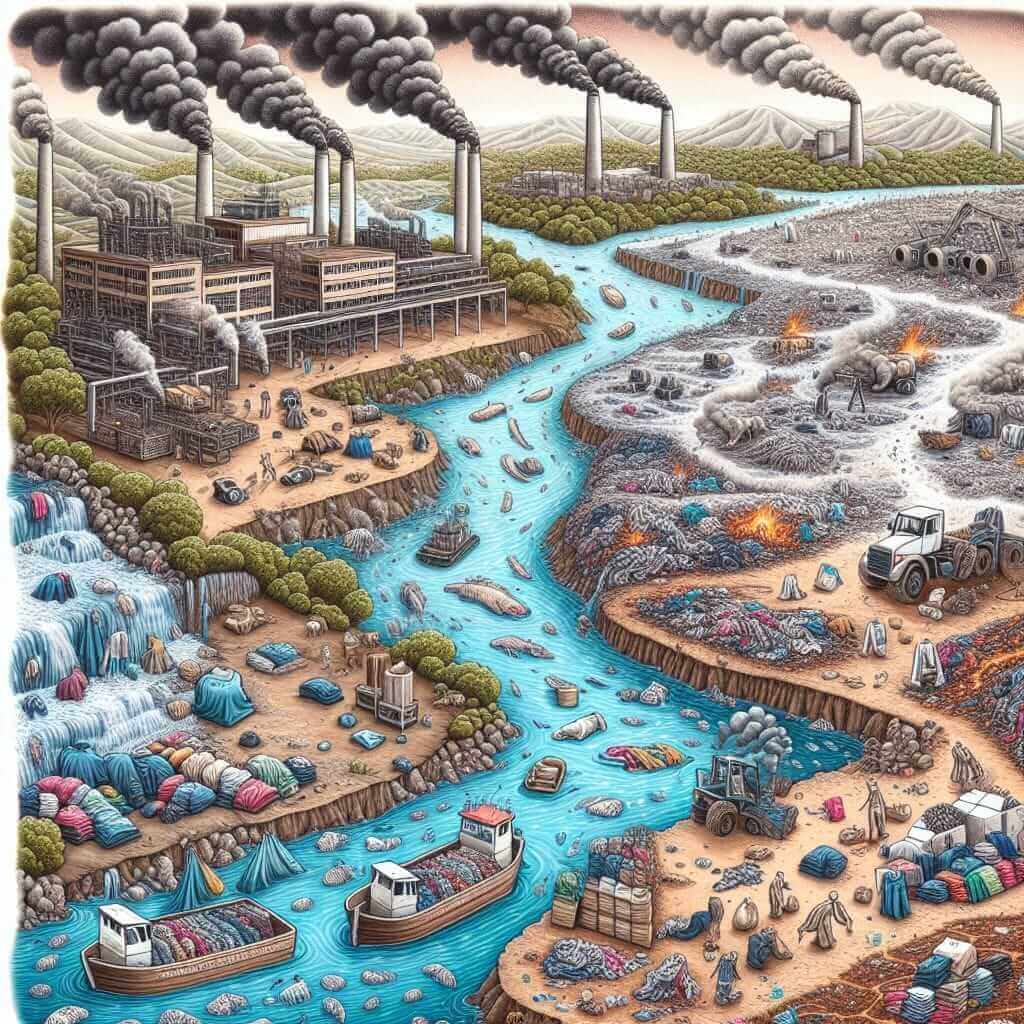The topic of fast fashion and its environmental impact has gained significant attention due to increasing environmental concerns. It is a relevant and timely theme for IELTS Writing Task 2, frequently appearing in recent exams. This article provides a comprehensive guide for IELTS candidates, including sample essay questions, a detailed analysis, and a complete essay sample on the topic.
Potential Essay Questions
- “The fast fashion industry has a negative impact on the environment. To what extent do you agree or disagree?”
- “Discuss the effects of the fast fashion industry on the environment and recommend possible solutions.”
- “What are the environmental impacts of fast fashion, and how can both consumers and manufacturers mitigate these effects?”
Selecting an Essay Question
For this exercise, let’s choose the first essay question:
“The fast fashion industry has a negative impact on the environment. To what extent do you agree or disagree?”
Analyzing the Essay Question
This question asks you to discuss the extent to which you agree that the fast fashion industry negatively impacts the environment. You need to provide reasons and examples to support your stance.
Key Points to Consider:
- The environmental toll of production processes (e.g., water usage, chemical pollution).
- The waste generated by discarded clothing.
- Ethical implications like labor exploitation.
- Potential counterarguments such as economic benefits and employment creation.
Sample Essay
Fast fashion, characterized by the rapid production of inexpensive clothing to meet ever-changing trends, has become a dominant force in the apparel industry. However, this phenomenon has profound negative impacts on the environment, which I believe far outweigh any potential benefits.
Firstly, the manufacturing processes involved in fast fashion are notoriously detrimental to the environment. High volumes of water are consumed in textile processing, and hazardous chemicals are often used in dyeing fabrics. For instance, the fashion industry is responsible for approximately 20% of global wastewater, highlighting its substantial ecological footprint. Furthermore, the release of microplastics from synthetic fabrics during washing contributes to ocean pollution, posing severe threats to marine life.
Secondly, fast fashion exacerbates the problem of textile waste. The industry’s model encourages consumers to frequently purchase and dispose of clothing items, often after only a few uses. In the United States alone, an estimated 85% of discarded textiles end up in landfills or are incinerated, leading to methane emissions and other environmental hazards. The transient nature of fast fashion thus creates a vicious cycle of consumption and waste.
Additionally, the ethical concerns associated with fast fashion cannot be overlooked. Many fast fashion brands rely on sweatshops, where workers face substandard conditions and meager wages. While this may not directly harm the environment, it reflects a broader disregard for sustainable and ethical practices that could contribute to a more balanced and eco-friendly industry.
Admittedly, proponents of fast fashion argue that it democratizes fashion by making trendy clothing affordable and creates significant employment opportunities. However, these benefits come at an unsustainable price. The environmental degradation and exploitation inherent in fast fashion practices undermine any economic advantages, necessitating a pivot towards more sustainable models.
In conclusion, the negative environmental impacts of fast fashion, from excessive water use and chemical pollution to the massive accumulation of textile waste, are severe and far-reaching. While the industry does provide economic benefits, these are heavily outweighed by its ecological and ethical costs. Immediate action is required to mitigate these adverse effects and promote more sustainable consumption patterns. (315 words)
Essay Writing Tips
Vocabulary and Grammar Tips:
- Environmental Toll: Refers to the negative environmental impact.
- Hazardous Chemicals: Harmful substances used in textile processing.
- Microplastics: Tiny plastic particles resulting from the breakdown of synthetic fabrics.
- Substandard Conditions: Inadequate and poor working environments.
- Tangible and Intangible Costs: Real economic and ethical implications.
Key Vocabulary:
- Footprint (n) [/ˈfʊt.prɪnt/]: The impact of human activities on the environment.
- Manufacturing (n) [/ˌmæn.jʊˈfæk.tʃɚ.ɪŋ/]: The process of producing goods.
- Sustainable (adj) [/səˈsteɪ.nə.bəl/]: Capable of being maintained over the long term without harming the environment.
- Mitigate (v) [/ˈmɪt.ɪ.ɡeɪt/]: To make less severe or serious.
- Textile (n) [/ˈtɛks.taɪl/]: Types of cloth or woven fabric.
- Incinerated (v) [/ɪnˈsɪn.ə.reɪt/]: To burn something completely.
- Exacerbate (v) [/ɪɡˈzæs.ə.beɪt/]: To make a situation worse.
- Phenomenon (n) [/fɪˈnɒm.ɪ.nən/]: An observable event, often requiring explanation.
- Sweatshop (n) [/ˈswɛtˌʃɒp/]: A factory with poor working conditions.
- Eco-friendly (adj) [/ˈiː.kəʊˌfrɛn.dli/]: Not harmful to the environment.
Conclusion
The environmental impact of fast fashion is a critical issue that demands urgent attention. This guide has provided an in-depth analysis and a complete essay sample to help IELTS candidates understand and articulate their views on this pressing topic. By practicing these essay questions, learners can improve their writing skills and be better prepared for the IELTS exam.
Additional Essay Topics for Practice
- “Evaluate the role of consumers in mitigating the negative impacts of fast fashion on the environment.”
- “To what extent should governments intervene to address the environmental issues caused by the fashion industry?”
- “Discuss the ethical implications of fast fashion and suggest ways to promote sustainable practices in the industry.”

For additional resources on the impact of the fashion industry on the environment, visit The Impact of Fashion Industry on the Environment, The Impact of Fast Fashion on the Environment, and The Effects of Fast Fashion on the Environment.